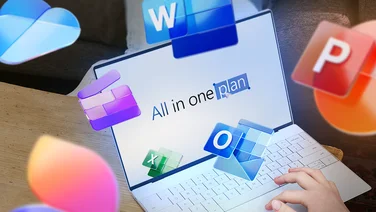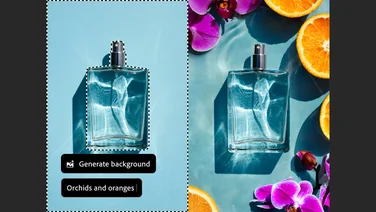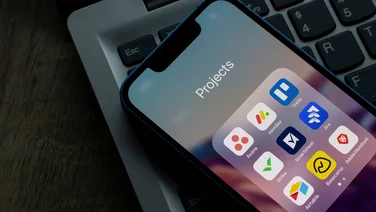To help us provide you with free impartial advice, we may earn a commission if you buy through links on our site. Learn more



Virtually all video-editing software comes with creative effects, but the effects tend to be a bit tacky and superfluous. Hitfilm is different in that it produces the kinds of effects that are integral to a story: particle effects such as smoke, fire and explosions, plus compositing tools for combining discrete video elements into a shot.

Once camera tracking is complete, 3D models can be placed inside the scene with breathtaking realism
There are lots of conventional effects too, such as colour correction, distortion, grunge and artistic effects. Many of these put general-purpose editors to shame in terms of output quality, precision and preview smoothness. Hitfilm 2 can also handle conventional timeline editing duties, but we’d stick to a conventional editor for compiling shots created in Hitfilm. It’s worth noting that Sony Vegas Pro 12 can import Hitfilm project files without the need to render them first.
The particle effects and compositing tools are the star attractions. Both benefit enormously from the bundling of a Hitfilm-specific version of Imagineer Systems’ Mocha, which analyses video clips and calculates how the camera moved when shooting the scene. These calculations are automatic, but it requires two or more flat (or roughly flat) surfaces to be carefully defined. These are relatively easy to locate in urban shots and much harder in other scenes. It takes skill and practice to get the most from Mocha, but our initial attempts revealed its stunning potential.

Particles are animated in 3D space too, but extruded text is clumsily implemented, obscuring other 3D elements that should be in front of it
Hitfilm already has sophisticated tools for tracking 2D motion in video clips, which is useful for making a particle generator lock to a marker in a video clip. However, Mocha’s 3D camera tracking means that particles become fully embedded in the 3D world of the video footage. They not only move in perfect synchronisation with panning shots, but grow bigger and even pass behind the camera as it approaches.
Our one frustration is that the virtual floor, which acts as a reference point for numerical coordinates in Hitfilm, doesn’t necessarily bear any relation to the floor in the tracked scene. Manipulating multiple 3D objects is hard enough at the best of times, and it’s harder still when you and your software differ on the definition of up.
3D camera tracking breathes life into another new feature in version 2: the ability to import 3D models. These must be created elsewhere, but there are options to break models into component parts and animate them independently, so you can rotate propellers for example. Render quality is reasonable, but without support for ray tracing the chances are that the software used to design a 3D model will be able to render it at higher quality. However, thanks to Mocha’s camera tracking, 3D models sit inside video clips with startling accuracy. If you’re happy to pick some off-the-shelf 3D models and spice them up with some dramatic particle effects, it’s hard to imagine a more convenient way to add UFO invasions to DIY film projects.
There are lots of other new features, too. Moving particle emitters can now release particles at the end of their life or as they hit a surface, which is perfect for creating exploding fireworks or rockets that detonate on impact. As before, each particle is actually a bitmap, but now it’s possible to animate these bitmaps for vastly more complex simulations.

The mocha plug-in analyses video clips, calculating the changing camera perspective and mapping it to 3D animations
A collection of new video effects give 2D media a three-dimensional quality. Extrude is most likely to be used for text, but it can be applied to any object. Atomic Particle splits a clip into thousands of pixel-like dots which can then be scattered and animated into complex shapes. It can respond to audio, too, although the resemblance to cheesy screensavers is unfortunate. The Shatter effect knocks brick-like holes in the middle of the clip; look out for this one in a future hip-hop album trailer. These effects are welcome, but the method for making them sit in the same world as other 3D elements is counter-intuitive and a little flawed.
We loved the first version, but Hitfilm has really hit its stride in this update. It’s not as versatile as Adobe After Effects, but it’s much more than a budget alternative, with superior particle effects, proper 3D animation and the huge benefits of mocha (which is an expensive third-party plug-in for After Effects). It’s just as technical, with vast lists of parameters and barely any off-the-shelf instant results. However, this is as it should be. 3D animation and compositing is inherently complex and Hitfilm doesn’t shy away from providing the necessary tools. It’s perfect for action films, but there are plenty of other uses too, including pop videos, animated product shots, logos and business graphics. It’s also ideal for blowing stuff up just for the sheer thrill of it. We can’t recommend it highly enough.
| Details | |
|---|---|
| Price | £299 |
| Details | www.fxhome.com |
| Rating | ***** |





